Fitness After A Stroke
Strokes are devastating, not only physically, but mentally. They change lives, many of which are very young and active. When stroke patients are discharged from physical therapy, many are just beginning to recover physically, especially from a fitness and strength perspective. This is where the experienced Athletic Trainer, Strength Coach or Personal Trainer can make a huge difference in their quality of life.
Both physical and mental aspects must be addressed when entering a fitness program. From the physical perspective, balance, strength, flexibility, coordination and cardiovascular fitness are just some parts that may be incorporated into the fitness program. The mental aspect may be even tougher in addressing fear, complacency and motivation, to name a few.
The stroke patient can be addressed just like any other fitness client and should be. Ask them the same questions.
- What are your goals?
- What do you need to be able to do to obtain your goals?
- What are your current limitations?

With these answers in mind, a professional now needs to assess where the client currently is physically by looking for strengths, weaknesses, asymmetries, flexibility issues, etc. At this point, a proper plan can be designed. Since strokes typically affect one side of the body, it is important to train each side independently. For example, step ups or isometric lunges for lower body and single arm presses or rows with a band can work each side of the upper body. The resistance or range of motion may need to be modified depending on how the client has been affected. Yes, resistance or strength training needs to be a part of the program. In an article in NeuroRehabilitation, investigators determined that targeted strength training in patients with muscle weakness due to strokes significantly increased muscle power without any negative effects on spasticity.
Considering many stroke clients are de-conditioned when they begin a fitness program, it is important to incorporate strength exercises into the sessions to improve active daily living activities such as walking through a crowd, wearing high heels or getting through a work day with less physical effort. Others may benefit by being able to start running again or getting involved with other types of sporting activities they have been missing.
Core stability and flexibility are two other aspects that need to be addressed in a program as well. The core muscles which can include the abdominal, low back and hip musculature provides a base of support for the arms and legs to work. There are a million core exercises that can utilized, but start with simple and progress to complex work. Isometric and anti-rotational core exercises like planks, planks with leg lifts or resistance band chopping exercises are a great place to start. Flexibility and mobility are also important aspects to consider and should be addressed one side at a time. Since contractions typically occur in strokes, they can limit movement and function. It is also important to send the client home with some stretching exercises to perform on their own.
The mental side of the program may be a little more trying than the physical side. Some clients may be fearful to perform certain exercises because they assume they just can’t do those things anymore, some frustrated that they can’t do what was once easy and some that have just lost motivation. It is the professional’s job to find ways to overcome these issues, whether modifying exercises or showing how they relate to their goals. Progress is the biggest component here. Showing improvement and where a client has come from and their accomplishments is the key to success. Simply reminding a client how hard an exercise used to be or what they do now without thinking that was difficult before goes a long way.
Clients recovering from a stroke are no different than any other client, they may just have different goals and different limitations that affect the way a program is put together. Developing a relationship with a client and devising programs that are specific to their needs is the key to helping former stroke patients obtain the goals they are looking for.
Chris Phillips is the owner of Compete Sports Performance and Rehab in Orange County, CA. Chris is a certified Athletic Trainer, Strength and Conditioning Specialist and Corrective Exercise Specialist.
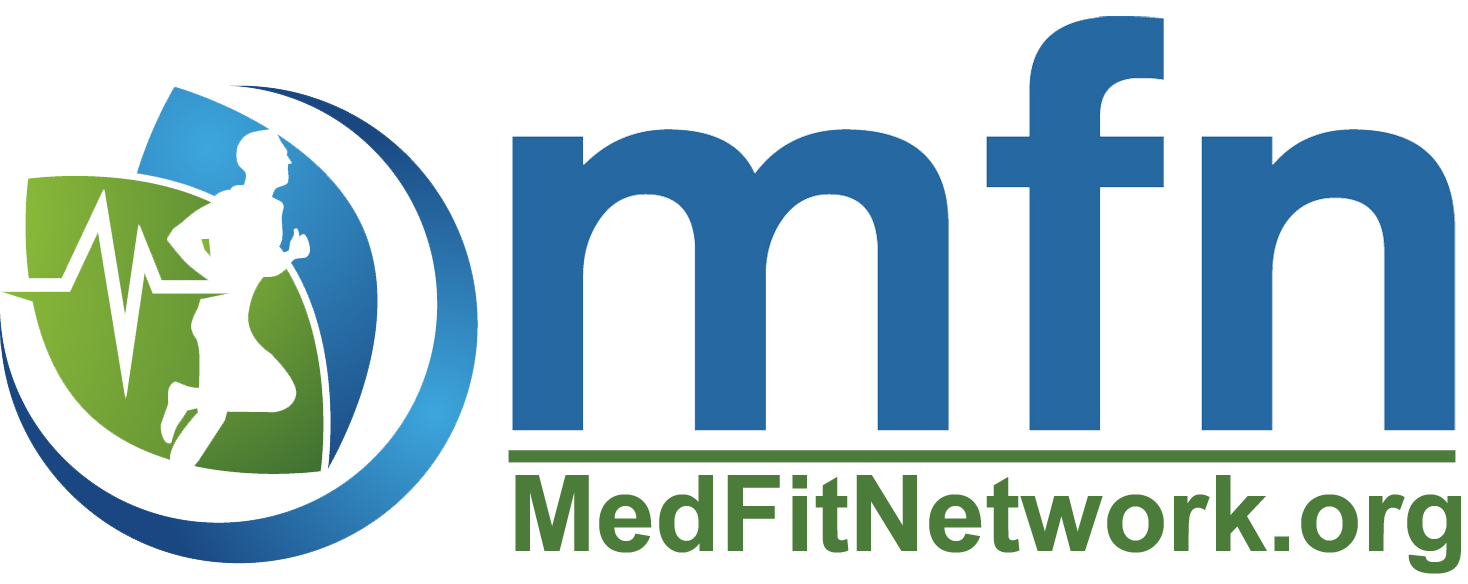

 It isn’t an easy question to answer. We can tackle it by considering all of the dollars those who incur inflammatory issues, chronic challenges, and cellular degradation will have to invest in maintaining function and comfort. We might also attempt to place a monetary value upon lost quality of life. We might even consider the simple question, “what would someone pay to rediscover health” considering their fear and apprehension of the alternative, and from that extrapolate the value.
It isn’t an easy question to answer. We can tackle it by considering all of the dollars those who incur inflammatory issues, chronic challenges, and cellular degradation will have to invest in maintaining function and comfort. We might also attempt to place a monetary value upon lost quality of life. We might even consider the simple question, “what would someone pay to rediscover health” considering their fear and apprehension of the alternative, and from that extrapolate the value.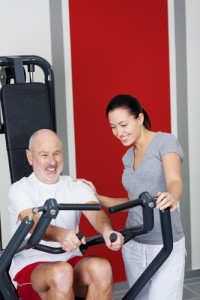 HOW DO YOU STEP UP AND CREATE AN AUDIENCE?
HOW DO YOU STEP UP AND CREATE AN AUDIENCE?
 Lately I can’t go to the gym without someone coming up to me looking for advice because in their efforts to remain fit and active they have hit a roadblock. Something hurts- a sore knee, achy shoulder or bad back that goes out more than they do. Ditto for my practice where I have seen a significant increase in exercise related ailments. I should give out orthopedic frequent flyer miles.
Lately I can’t go to the gym without someone coming up to me looking for advice because in their efforts to remain fit and active they have hit a roadblock. Something hurts- a sore knee, achy shoulder or bad back that goes out more than they do. Ditto for my practice where I have seen a significant increase in exercise related ailments. I should give out orthopedic frequent flyer miles. Step 2 thru 7 allow you to customize a program for your unique frame (based on the self-test and your own history) focusing on balanced workouts, frame-friendly nutrition and the important role of recovery and mindset. The program combines healing and restorative methods from the worlds of rehabilitation, martial arts, and yoga in a way never presented before. A “troubleshooting” section teaches you how to prevent, treat and safely work (out) around the “Top 20” sports medicine ailments from tendinitis and knee problems to back pain and pinched nerves. I also offer an insiders view of safely navigating the healthcare system, including a look into the very promising future for those with stubborn musculoskeletal issues. Most importantly, I use stories, drawn from my experience treating many wonderful athletes, entertainers and my many patients to help you better understand, and listen to your body- so that you can extend the warranty on your frame and it will be there for you when you go the distance. Remember,
Step 2 thru 7 allow you to customize a program for your unique frame (based on the self-test and your own history) focusing on balanced workouts, frame-friendly nutrition and the important role of recovery and mindset. The program combines healing and restorative methods from the worlds of rehabilitation, martial arts, and yoga in a way never presented before. A “troubleshooting” section teaches you how to prevent, treat and safely work (out) around the “Top 20” sports medicine ailments from tendinitis and knee problems to back pain and pinched nerves. I also offer an insiders view of safely navigating the healthcare system, including a look into the very promising future for those with stubborn musculoskeletal issues. Most importantly, I use stories, drawn from my experience treating many wonderful athletes, entertainers and my many patients to help you better understand, and listen to your body- so that you can extend the warranty on your frame and it will be there for you when you go the distance. Remember, 
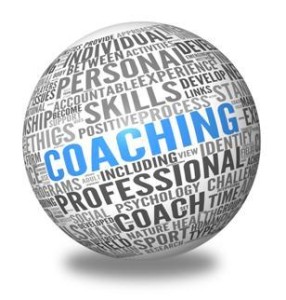 You Need a Coach.
You Need a Coach.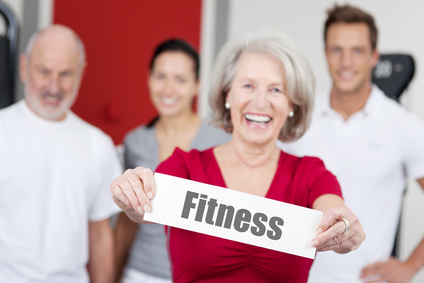
 When you pass a certain point in life, sedentarism almost becomes a given. Few people actually keep being active once they retire because they believe the resting promotes good health. However, that’s only half true. While it’s important to relax and recover, it’s also equally essential to stay fit.
When you pass a certain point in life, sedentarism almost becomes a given. Few people actually keep being active once they retire because they believe the resting promotes good health. However, that’s only half true. While it’s important to relax and recover, it’s also equally essential to stay fit.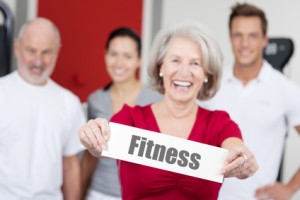 Working out increases bone density and range of motion, thus promoting better health in this department. Furthermore, it also helps restore
Working out increases bone density and range of motion, thus promoting better health in this department. Furthermore, it also helps restore 
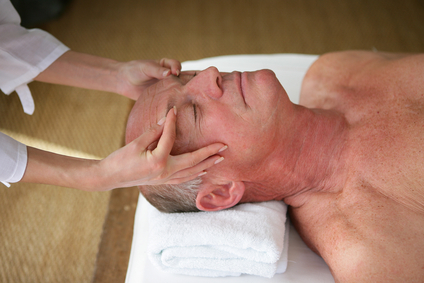
 The professions that require a state or national licensures, such as physicians, nurses, or physical therapists, help to provide checks and balances on who should and should not be providing a service to any individual. However, there are many professions within our healthcare community that are poorly understood and many times misrepresented by individuals with minimal certifications or credentials.
The professions that require a state or national licensures, such as physicians, nurses, or physical therapists, help to provide checks and balances on who should and should not be providing a service to any individual. However, there are many professions within our healthcare community that are poorly understood and many times misrepresented by individuals with minimal certifications or credentials.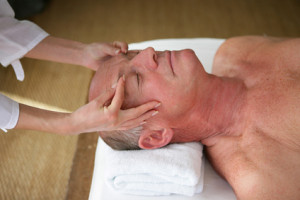
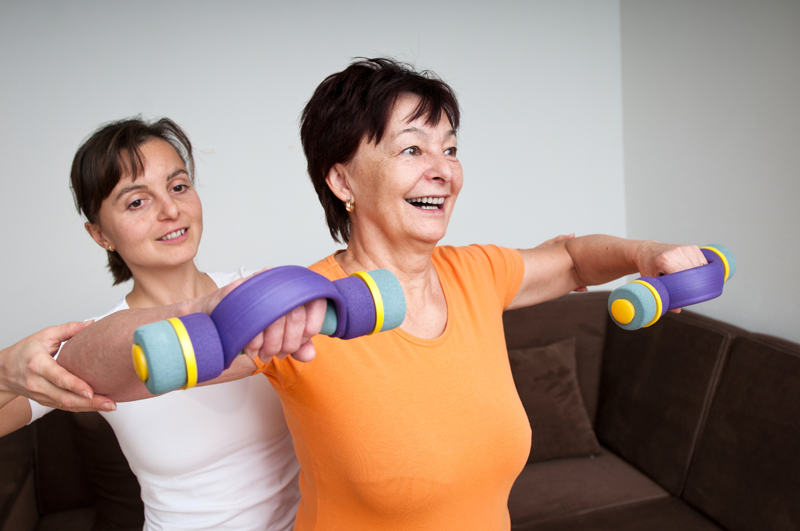
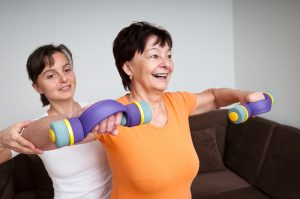 What exactly causes Multiple Sclerosis is not known but there are symptoms to look out for. The symptoms are fatigue, walking difficulties, vision problems, spasticity or stiffness, weakness, bladder problems, depression, dizziness or vertigo, emotional changes, cognitive changes, pain, headaches, tremors and breathing problems. Exercise prescriptions need to be planned according to the symptoms that are being presented. Each time you work with your trainer talk to them about how you feel that day. This will help to ensure that you don’t overdo a workout.
What exactly causes Multiple Sclerosis is not known but there are symptoms to look out for. The symptoms are fatigue, walking difficulties, vision problems, spasticity or stiffness, weakness, bladder problems, depression, dizziness or vertigo, emotional changes, cognitive changes, pain, headaches, tremors and breathing problems. Exercise prescriptions need to be planned according to the symptoms that are being presented. Each time you work with your trainer talk to them about how you feel that day. This will help to ensure that you don’t overdo a workout.
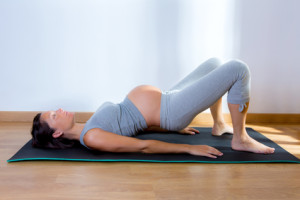 The understandable fear (due to things like decreased oxygen supply to the baby) that existed with pregnancy & exercise years ago is no longer warranted. Because of substantial research, it is now safe for women to continue or start exercising while pregnant. As long as she gets approval from her doctor & seeks out a qualified and certified fitness professional, she should be confident in knowing that the recommendations below will help her.
The understandable fear (due to things like decreased oxygen supply to the baby) that existed with pregnancy & exercise years ago is no longer warranted. Because of substantial research, it is now safe for women to continue or start exercising while pregnant. As long as she gets approval from her doctor & seeks out a qualified and certified fitness professional, she should be confident in knowing that the recommendations below will help her. 4. Weight Training Exercise: Circuiting training has shown to be very effective for mother’s to be throughout their entire pregnancy. These include exercises that work the entire body and can be performed back to back with little rest in between. I recommend exercises that work the following muscles: legs, chest, back, shoulders and arms. They can be done 2-3 days/week, 1-2 sets of 12-15 reps. The rest period can be in between 45-75 seconds.
4. Weight Training Exercise: Circuiting training has shown to be very effective for mother’s to be throughout their entire pregnancy. These include exercises that work the entire body and can be performed back to back with little rest in between. I recommend exercises that work the following muscles: legs, chest, back, shoulders and arms. They can be done 2-3 days/week, 1-2 sets of 12-15 reps. The rest period can be in between 45-75 seconds.